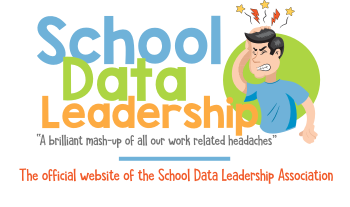Standard 1 - Engaging and Supporting All Students in Learning
Teachers know and care about their students to engage them in learning. They connect learning to students’ prior knowledge, backgrounds, life experiences, and interests. They connect subject matter to meaningful, real-life contexts. Teachers use a variety of instructional strategies, resources, and technologies to meet the diverse learning needs of students. They promote critical thinking through inquiry, problem solving, and reflection. They monitor student learning and adjust instruction while teaching.
1.6 - Monitoring student learning and adjusting instruction while teaching
As teachers develop, they may ask, “How do I…” or “Why do I…”
- systematically check for student understanding and revise plans accordingly?
- incorporate a variety of strategies in a lesson to check for student understanding?
- monitor the learning of students with limited English proficiency or of students with special needs?
- adjust the lesson plan to accelerate instruction when I determine that the pace of the lesson is too slow?
- make "on the spot" changes in my lesson based on students' interests and questions?
- provide additional support and opportunities for students to learn when some students have mastered the lesson objective(s) and others have not?
- adjust my lesson when I don't have enough time to complete everything I planned to do?
1. Systematically Check for Student Understanding and Revise Plans Accordingly
• Resource: Edutopia: Formative Assessment Strategies for Every Classroom
• Description: This article provides a range of formative assessment techniques to check for understanding and adjust instruction in real-time based on student feedback.
• Resource: The Teacher Toolkit: Checking for Understanding
• Description: A collection of practical strategies for teachers to use to gauge student understanding continuously and revise instructional plans accordingly.
2. Incorporate a Variety of Strategies in a Lesson to Check for Student Understanding
• Resource: TeachThought: 10 Innovative Formative Assessment Strategies
• Description: A list of innovative formative assessment strategies that help teachers check for understanding in diverse ways, catering to different learning styles.
• Resource: ASCD: Classroom Assessment Techniques
• Description: Offers a variety of assessment techniques designed to provide feedback and measure student understanding effectively.
3. Monitor the Learning of Students with Limited English Proficiency or Students with Special Needs
• Resource: Colorín Colorado: Strategies for ELL Assessment
• Description: Provides strategies specifically tailored for assessing English Language Learners (ELLs) to monitor their understanding and adjust instruction accordingly.
• Resource: Understood: Monitoring Student Progress for Special Education
• Description: Focuses on strategies to monitor the learning progress of students with special needs and make necessary instructional adjustments.
4. Adjust the Lesson Plan to Accelerate Instruction When the Pace is Too Slow
• Resource: Edutopia: Differentiating Instruction with Pace
• Description: Discusses strategies for differentiating instruction by adjusting the pace of the lesson to meet the needs of all students, including those who may be ready to move faster.
• Resource: Learning Sciences International: Adjusting Pacing to Keep Students Engaged
• Description: Offers techniques for teachers to monitor engagement and adjust lesson pacing dynamically.
5. Make “On the Spot” Changes in My Lesson Based on Students’ Interests and Questions
• Resource: Responsive Classroom: Strategies for On-the-Spot Adjustments
• Description: Provides strategies for teachers to make spontaneous changes to their lessons in response to student interests and questions to keep them engaged and motivated.
• Resource: Teach Like a Champion: Making Responsive Adjustments
• Description: Discusses techniques for making responsive adjustments during lessons to address immediate student needs and curiosities.
6. Provide Additional Support and Opportunities for Students to Learn When Some Have Mastered the Lesson Objectives and Others Have Not
• Resource: Differentiation Central: Tiered Instructional Activities
• Description: Offers guidance on designing tiered activities that provide varying levels of support, ensuring all students continue to learn and are appropriately challenged.
• Resource: Reading Rockets: Scaffolded Instruction
• Description: Explains how to provide additional support for students who need it while offering challenges to those who have mastered the content.
7. Adjust My Lesson When I Don’t Have Enough Time to Complete Everything I Planned to Do
• Resource: The Cult of Pedagogy: Pacing Guides for Teachers
• Description: Discusses how to effectively pace lessons and make necessary adjustments when time constraints prevent the completion of planned activities.
• Resource: ASCD: Prioritizing Learning Objectives
• Description: Provides strategies for prioritizing learning objectives and making informed decisions about what to cut or adjust when time is limited.
These resources provide strategies and tools for teachers to monitor student learning effectively and adjust instruction dynamically, ensuring that all students are engaged and supported in their learning process. They also help teachers respond to diverse student needs and classroom dynamics, fostering a more adaptive and responsive learning environment.
